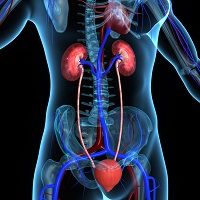Critical Illness and Renal Clearance: Why So Fast?
Renal clearance can be significantly elevated in the critically ill. Treating these patients with renally cleared drugs can present a problem. Drugs-whisked through the body with greater than expected efficiency, a process called augmented renal clearance (ARC)-reach only suboptimal levels and, consequently, patients experience no improvement or actual clinical decline. ARC is often associated with elevated urinary creatinine clearance.

Renal clearance can be significantly elevated in the critically ill. Treating these patients with renally cleared drugs can present a problem. Drugs—whisked through the body with greater than expected efficiency, a process called augmented renal clearance (ARC)—reach only suboptimal levels and, consequently, patients experience no improvement or actual clinical decline. ARC is often associated with elevated urinary creatinine clearance (CrCl). A prospective, observational pharmacokinetic (PK) study in the November issue of Critical Care explores whether CrCl is a surrogate marker for ARC.
The researchers looked at critically ill patients at risk of ARC hospitalized in an adult intensive care unit. They measured changes in glomerular filtration (GFR) and renal tubular function using exogenous marker compounds. All patients were at least 60 years old and had no evidence of acute renal impairment or histories of chronic kidney disease or renal replacement therapy.
The researchers administered four study markers concurrently:
- Sinistrin 2500 mg a GFR marker
- p-Aminohippuric acid 440 mg, a tubular anion secretion marker
- Rac-pindolol 5 or 15 mg a tubular cation secretion marker
- Fluconazole 100 mg, a net tubular resorption marker
The measured plasma concentrations were then measured over 24 hours post-administration. Patients tolerated the marker drugs well, and they experienced no adverse events.
Sinistrin clearance, net tubular secretion of PAH, and net tubular reabsorption of fluconazole were significantly elevated. Net tubular secretion of (S)- and (R)-pinodolol was impaired. Non-renal elimination of PAH and fluconazole were also increased.
Compared to data reported in healthy volunteers that employed identical exogenous markers of renal function, critically ill patients at risk of ARC had elevated glomerular filtration and renal tubular anion secretion.
In critically ill patients at risk of ARC, significant alterations in glomerular filtration, renal tubular secretion and tubular reabsorption are apparent. Clinicians need to be aware of this fact when these patients need renally eliminated drugs, since blood levels of drugs needed to address serious issues may fail to reach therapeutic levels.